Kale recipes offer endless possibilities, and with 25+ unique dishes from around the world, you’re sure to find something new to try. Whether you’re making a hearty kale soup from the UK, a vibrant kale salad from Australia, or a quick stir-fry from India, this leafy green is incredibly versatile. Discover delicious kale smoothies in Canada or try a creative kale wrap in the USA. Explore international variations of kale dishes and bring fresh global flavours to your kitchen. At allrecipesbyingredients.com, you’ll find a curated selection of kale recipes from the UK, USA, India, France, and more.
Curry
- Kale and Chickpea Curry [Get Recipe]
- Coconut Curry Shrimp with Potatoes and Kale [Get Recipe]
- Kale Curry Recipe Indian [Get Recipe]
Salads
- Kale Salad with Apple, Cranberries and Pecans [Get Recipe]
- Simple Kale Apple Walnut Salad [Get Recipe]
- Kale Salad With Apples and Cheddar [Get Recipe]
- Brussels sprout and Kale Salad with Strawberry Vinaigrette [Get Recipe]
- Apple and Kale Salad with Pepper berry & Cherry Flavour Pearls [Get Recipe]
- Kale Citrus Salad [Get Recipe]
- Kale, Fuji Apple, Avocado and radish salad with orange vinaigrette [Get Recipe]
- Kale Salad with Roasted Pistachios and Parmesan [Get Recipe]
- Raw Tuscan Kale Salad [Get Recipe]
- Kale & Apple Salad With Tahini & Maple Dressing [Get Recipe]
- Kale Apple Salad with Crispy Shallots [Get Recipe]
- Kale, Carrot & Apple Salad [Get Recipe]
- Kale, Pickled Onions, Toasted Almonds, Avocado Salad [Get Recipe]
Sandwiches
- Kale Hummus Sandwich [Get Recipe]
- Grilled Chicken and Kale Caesar Brick-Pressed Sandwiches [Get Recipe]
Wraps
- Cabbage, Kale Rolls [Get Recipe]
- Kangaroo Kale Rolls [Get Recipe]
- Kale, Egg and ricotta cheese rolls [Get Recipe]
Smoothies
- Kale, Pineapple, Banana, and Peanut butter Smoothie [Get Recipe]
- Kale, Avocado and Pineapple Smoothie [Get Recipe]
Soups
- Kale and White Bean Soup [Get Recipe]
- Smoky Pumpkin, Kidney Bean And Kale Soup [Get Recipe]
- Chunky Red Lentil, Kale & Tomato Soup (Vegan) [Get Recipe]
- Cauliflower, Kale and Pepita(Pumpkin seed) soup [Get Recipe]
- Kale, Carrot and Chickpea Soup [Get Recipe]
- Quick Kale Soup Recipe [Get Recipe]
Stir-fries
- Pan-Fried Kale [Get Recipe]
- Kale and Ginger Stir Fry [Get Recipe]
- Kale Stir Fry with Mushroom and Red Onion [Get Recipe]
Pasta Dishes
- Garlic Lemon Creamy Kale Pasta [Get Recipe]
- Creamy Kale Pasta [Get Recipe]
- Creamy pesto & kale pasta [Get Recipe]
- Easy 20 Minute Creamy Kale Pasta [Get Recipe]
- Mushroom and Kale Skillet Lasagna [Get Recipe]
- Chicken Kale Pasta [Get Recipe]
- Orecchiette with Butternut Squash, Kale, and Sausage [Get Recipe]
Kale Chips
- Crunchy, Kale Chips [Get Recipe]
What is Kale?
Kale is a leafy green vegetable that belongs to the cabbage family, known for its dense nutrients, including vitamins A, C, and K, as well as minerals like calcium and iron. It is often considered a superfood due to its high nutritional value. Kale has curly, green, or purple leaves and is used in a variety of dishes, including salads, smoothies, soups, and stir-fries.
How Many Types of Kale?
There are several types of kale, each with slightly different flavors and textures. The most common types are:
1. Curly Kale (Common Kale)
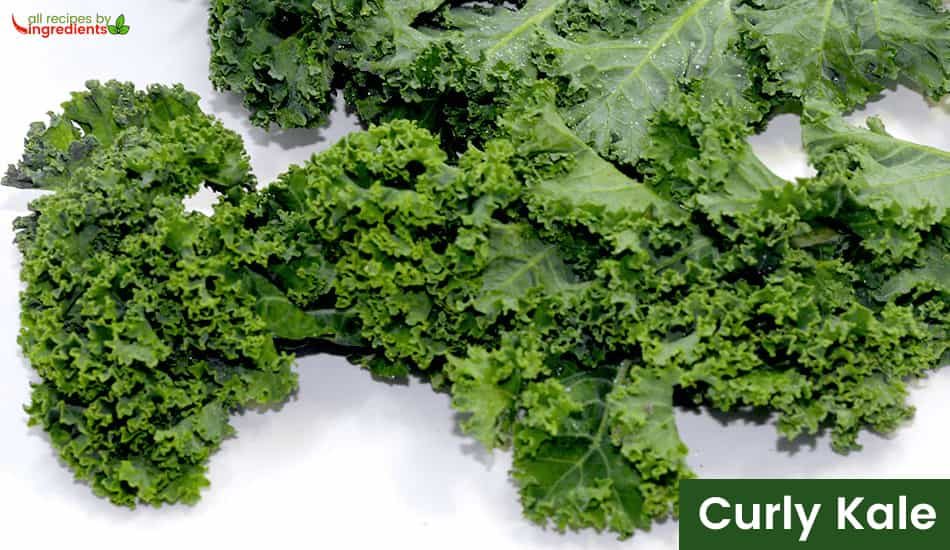
Appearance: Bright green with tightly curled leaves.
Taste: Slightly bitter and peppery when raw, but becomes milder when cooked.
2. Tuscan Kale (Dinosaur Kale or Lacinato Kale)
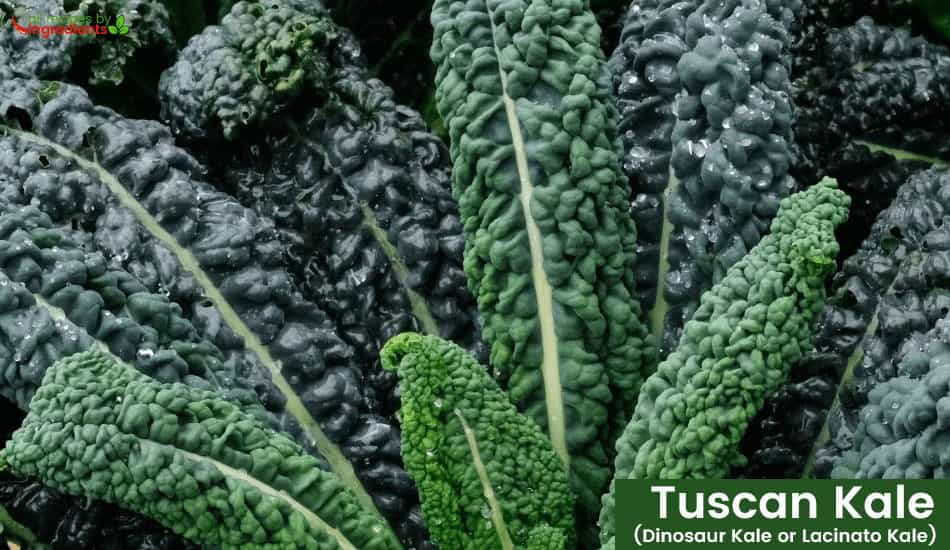
Appearance: Dark green, narrow leaves with a bumpy texture.
Taste: Sweeter and less bitter than curly kale, with a slightly earthy flavor.
3. Red Russian Kale
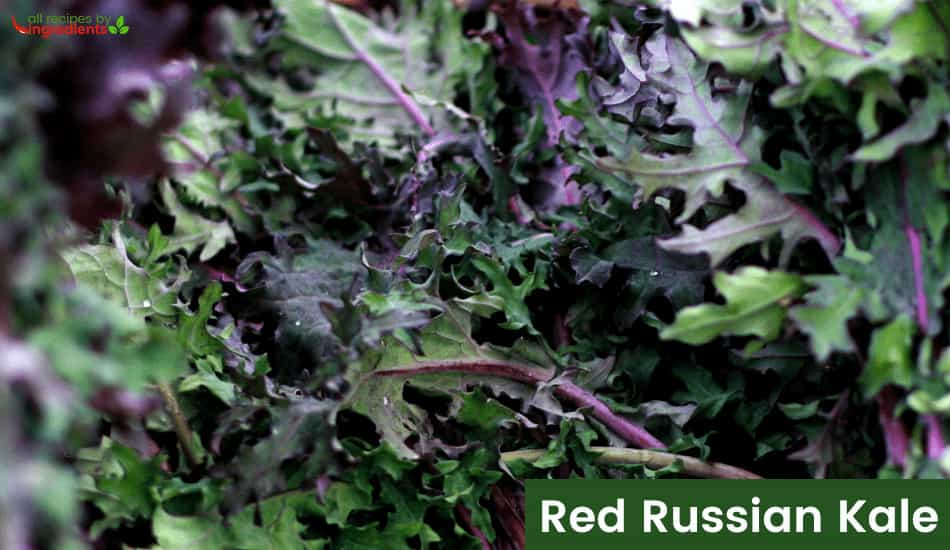
Appearance: Flat leaves with purple stems, often with a red or purple hue.
Taste: Milder and sweeter compared to curly kale, with a slightly peppery note.
4. Siberian Kale
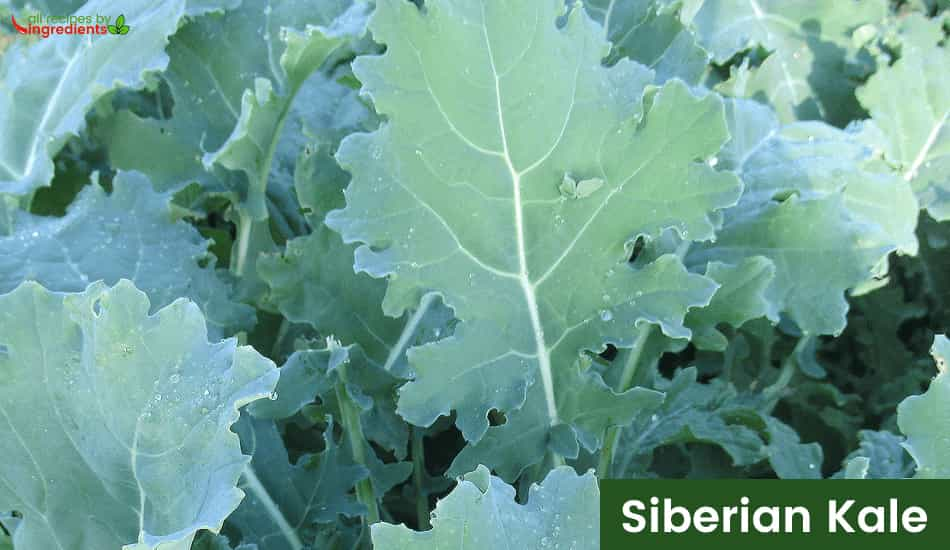
Appearance: Large, flat, and pale green leaves.
Taste: Mild and tender, making it more palatable for raw dishes like salads.
5. Redbor Kale
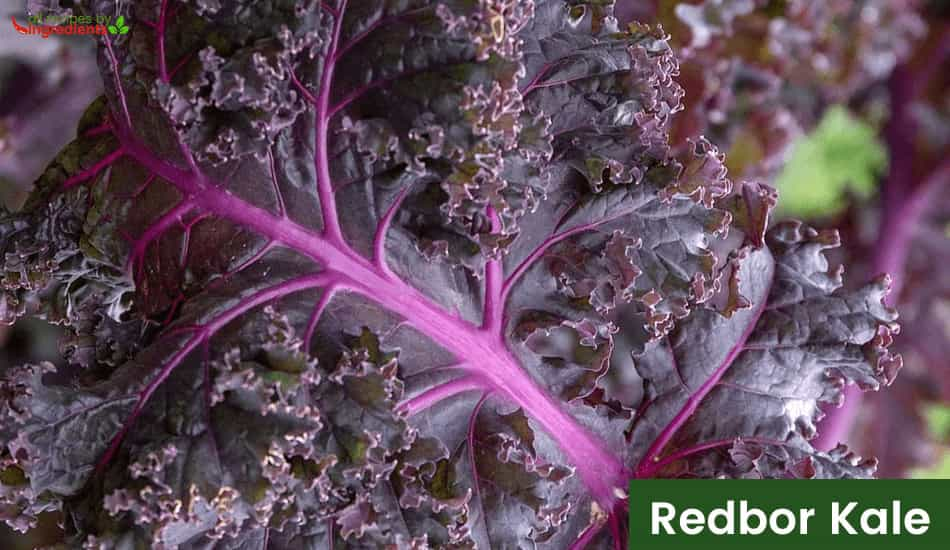
Appearance: Deep purple, curly leaves that can turn almost black in color.
Taste: Mild, slightly sweet, with a less bitter taste than green kale varieties.
6. Chinese Kale
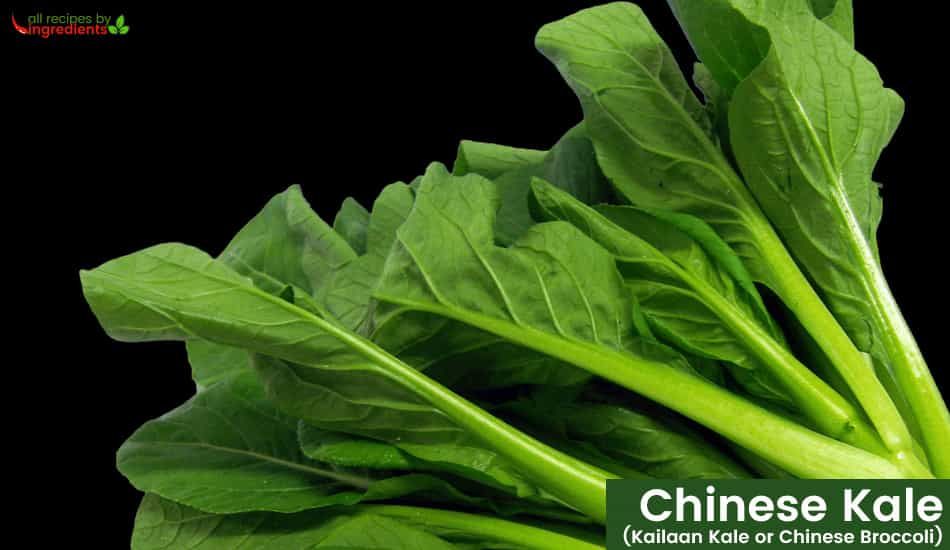
Appearance: Thick stems with broad, dark green leaves, sometimes with small white flowers.
Taste: Mild and slightly bitter, similar to broccoli but less intense. It has a tender texture and is commonly used in stir-fries and Asian cuisine.
7. Baby Kale
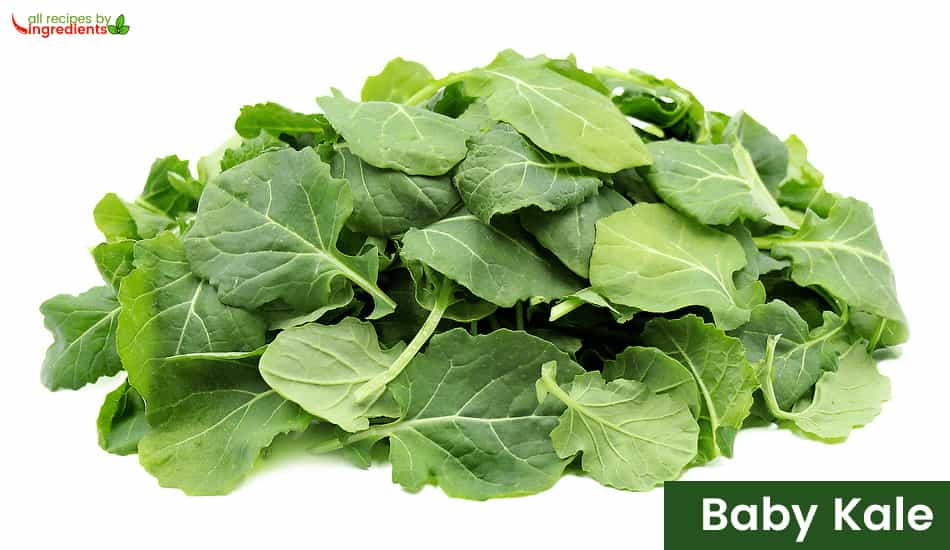
Appearance: Smaller, tender leaves, harvested when the plant is young.
Taste: Milder and less bitter than mature kale, with a delicate, almost sweet flavour. It’s often used in salads, sandwiches, and smoothies because of its tender texture.
8. Ornamental Kale (Flowering Kale)
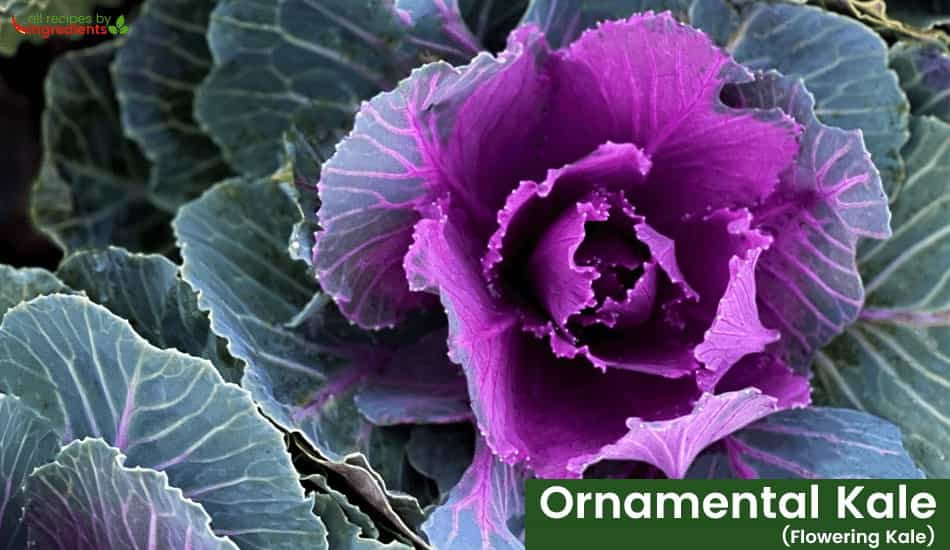
Appearance: Large, colourful leaves that range from pink to purple, green, and white, often used for decorative purposes in gardens.
Taste: Although edible, it’s tougher and more bitter compared to other kale varieties. It’s mainly grown for ornamental use rather than for eating, but if cooked, the flavour softens slightly.
Kale Nutritions
Despite slight variations in flavour and texture, all types of kale are packed with these essential nutrients, making them a superfood with numerous health benefits. Here are the common nutrients found in all 8 types of kale:
1. Vitamins
- Vitamin A: Kale is rich in beta-carotene, which the body converts to vitamin A, essential for eye health and immune function.
- Vitamin C: A powerful antioxidant that supports the immune system and helps with collagen production, improving skin health.
- Vitamin K: Kale is one of the best sources of vitamin K, which is important for blood clotting and bone health.
2. Minerals
- Calcium: Important for bone health and muscle function. Kale provides a plant-based source of calcium, especially essential for those on a dairy-free diet.
- Iron: Kale contains iron, which is crucial for red blood cell production and transporting oxygen in the body.
- Magnesium: This mineral supports muscle and nerve function, as well as maintaining a steady heartbeat and strong bones.
3. Antioxidants
- Lutein and Zeaxanthin: These antioxidants are essential for protecting the eyes from damage caused by UV light and may reduce the risk of cataracts and macular degeneration.
- Quercetin and Kaempferol: Powerful antioxidants that may have anti-inflammatory, antiviral, and cancer-fighting properties.
4. Fiber
- Kale is high in dietary fiber, which aids digestion, promotes healthy gut bacteria, and helps regulate blood sugar levels.
5. Omega-3 Fatty Acids
- Kale contains alpha-linolenic acid (ALA), a type of plant-based omega-3 fatty acid, which is beneficial for heart health and reducing inflammation.
6. Low in Calories
- All types of kale are low in calories, making them a nutrient-dense food that can be consumed in large quantities without adding many calories.
7. Water Content
- Kale has a high water content, which helps with hydration and supports overall bodily functions.
Different types of kale can be used in different dishes depending on their flavor and texture preferences.

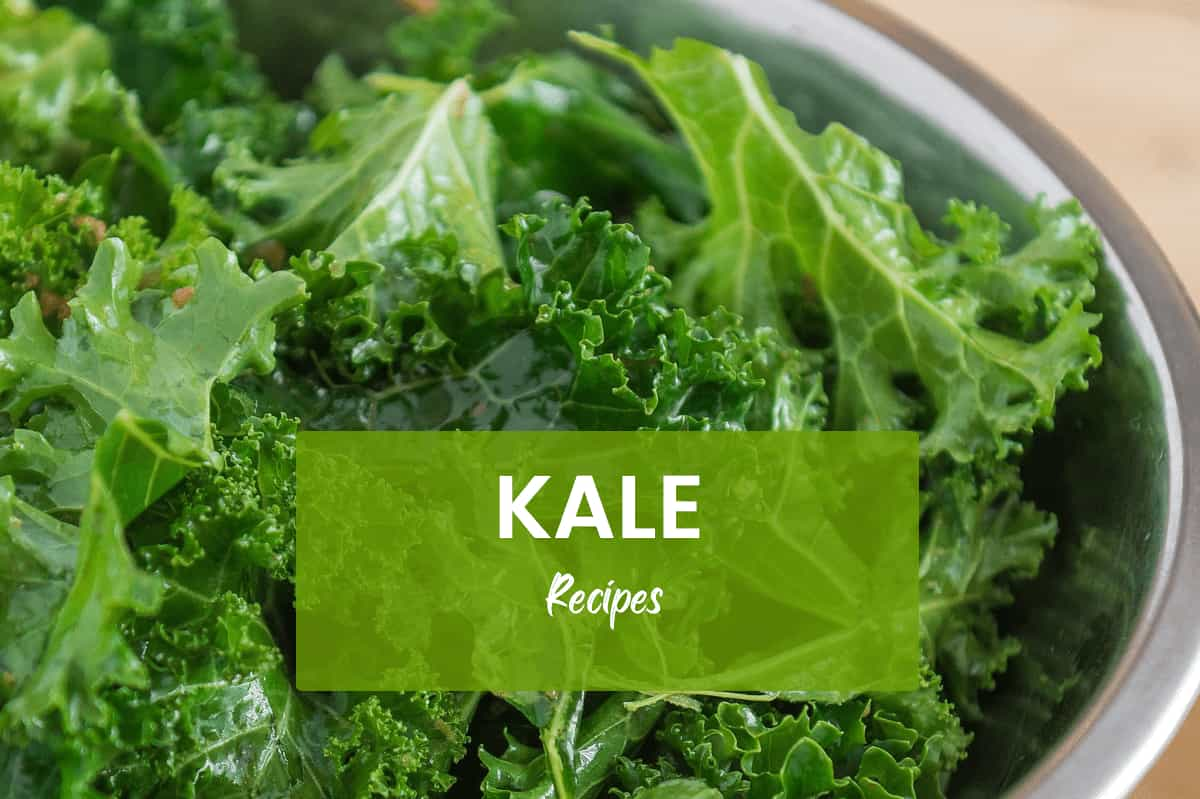
I do not even understand how I ended up here, but I assumed this publish used to be great